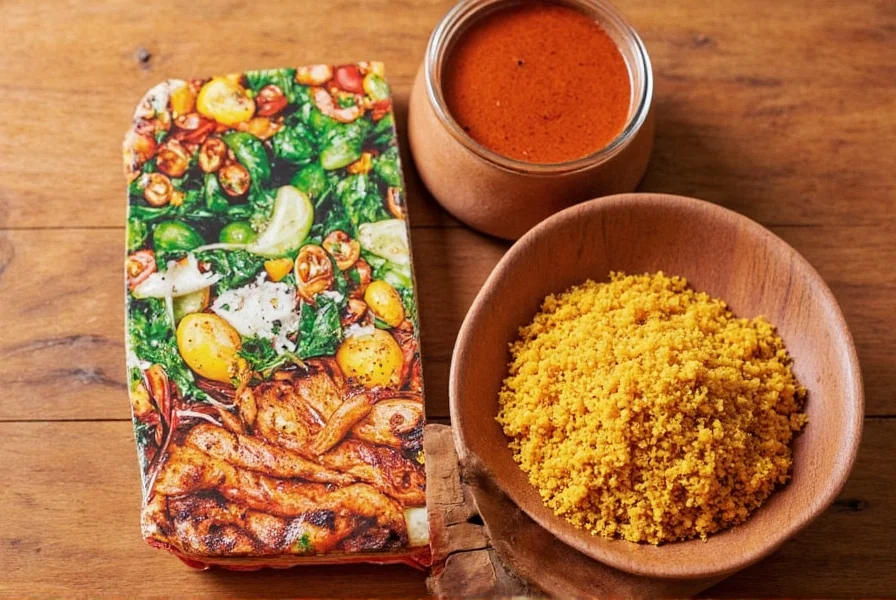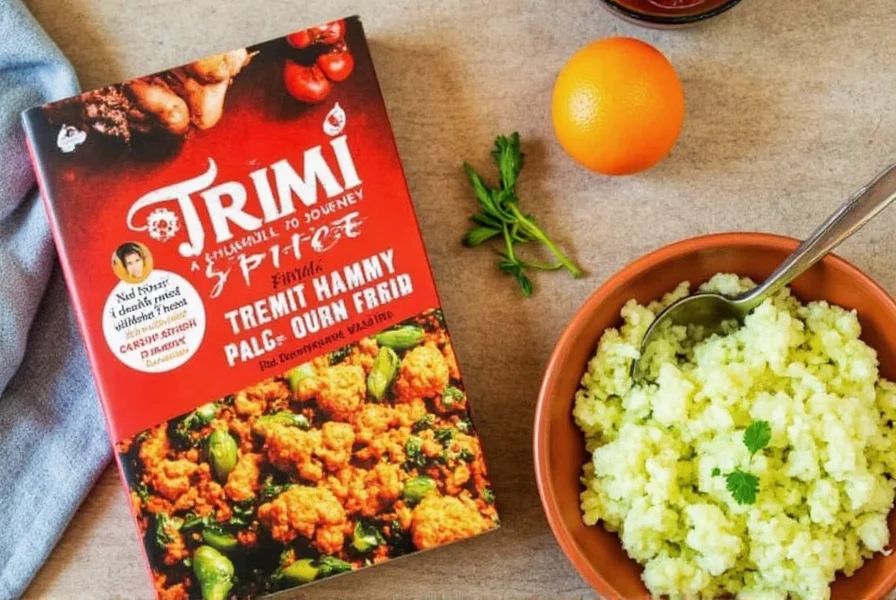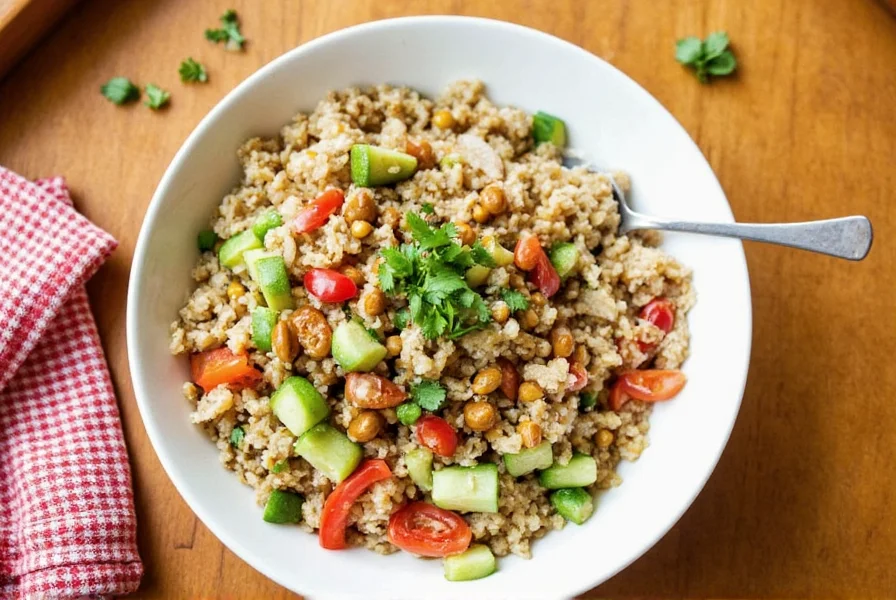Table of Contents
What is Trini Spice?
Trini spice is a traditional Caribbean seasoning blend originating from Trinidad and Tobago. It's known for its bold, smoky, and slightly spicy flavor profile, made from a combination of cumin, coriander, garlic powder, onion powder, paprika, and sometimes chili flakes. This versatile spice blend is a staple in Trinidadian cooking and has gained popularity worldwide for its ability to transform ordinary dishes into flavorful Caribbean delights. Unlike generic spice mixes, authentic Trini spice reflects centuries-old culinary traditions, with each ingredient carefully balanced to create depth without overwhelming heat.

Trini Spice Ingredients & Homemade Recipe
Authentic Trini spice typically follows this precise ratio: 40% paprika (for color and mild sweetness), 20% cumin (earthy depth), 15% coriander (citrusy notes), 10% garlic powder, 10% onion powder, and 5% chili flakes (adjustable for heat). Some traditional variations include allspice or thyme for extra complexity. The blend's magic lies in its balance - it's designed to enhance rather than dominate, making it perfect for both meats and vegetables.
Homemade Trini Spice Recipe: Combine 1/4 cup paprika, 2 tablespoons cumin, 1.5 tablespoons coriander, 1 tablespoon garlic powder, 1 tablespoon onion powder, and 1/2 teaspoon chili flakes (or cayenne for more heat). Mix thoroughly in a bowl, then store in an airtight container away from light and heat. Freshly made blends maintain peak flavor for 6-8 months.

10+ Authentic Trini Spice Recipes
Trini spice's versatility shines in these authentic Caribbean preparations:
Trini Spice Chicken Skewers
Marinate 1 lb chicken thighs in 2 tablespoons Trini spice, 1 tablespoon olive oil, 1 tablespoon lime juice, and 1 teaspoon honey for 2 hours. Thread onto skewers and grill for 6-8 minutes per side. Served with coconut rice and mango salsa for a complete Trinidadian feast.
Trini-Spiced Black Beans
Sauté 1 diced onion and 2 minced garlic cloves in olive oil. Add 2 cans black beans (drained), 1 tablespoon Trini spice, 1 teaspoon cumin, and 1/2 cup vegetable broth. Simmer for 15 minutes until thickened. Perfect for tacos, bowls, or as a side dish.
Trini Spice Grilled Vegetables
Toss bell peppers, zucchini, and red onions with 1 tablespoon Trini spice, 2 tablespoons olive oil, and salt. Grill for 10-12 minutes until tender-crisp. The smoky char enhances the spice's complexity while keeping vegetables vibrant.
Trini Spice Fish Tacos
Cover 1 lb white fish fillets with 1.5 tablespoons Trini spice and 1 tablespoon lime juice. Pan-sear for 3 minutes per side. Serve in corn tortillas with cabbage slaw and avocado crema. The spice's moderate heat complements delicate fish perfectly.
Trini Spice Roasted Potatoes
Toss baby potatoes with 1 tablespoon Trini spice, 2 tablespoons olive oil, and rosemary. Roast at 400°F for 25-30 minutes until crispy. A simple side that elevates any meal with Caribbean flair.

Trini Spice Buying Guide: Top 5 Brands Compared
| Brand | Key Ingredients | Heat Level | Best For | Price (per oz) | Special Features |
|---|---|---|---|---|---|
| Caribbean Spice Co. | Paprika, cumin, coriander, garlic, onion, chili | Moderate (3/5) | Grilled meats, stews, marinades | $0.85 | Hand-mixed in Trinidad, no preservatives |
| Island Flavors | Paprika, cumin, coriander, garlic, onion, allspice | Mild (2/5) | Vegetable dishes, rice, snacks | $0.92 | Organic certification, subtle smokiness |
| Caribbean Kitchen | Paprika, cumin, coriander, garlic, onion, cayenne | Medium-Hot (4/5) | BBQ rubs, seafood, jerk-style dishes | $0.78 | Extra cayenne for heat lovers, 100% natural |
| Trinidadian Spice Co. | Paprika, cumin, coriander, garlic, onion, thyme | Mild (2/5) | Chicken, fish, vegetarian dishes | $1.05 | Traditional thyme addition, small-batch production |
| Spice Island | Paprika, cumin, coriander, garlic, onion, chili | Moderate (3/5) | General-purpose seasoning, all dishes | $0.65 | Widely available, consistent quality |
When choosing Trini spice, consider your heat preference and dish type. Caribbean Spice Co. offers the most authentic Trinidadian profile, while Spice Island provides budget-friendly consistency. For vegetarian dishes, Island Flavors' mild allspice notes work best.

Trini Spice FAQs: Expert Answers
What is the difference between Trini spice and Jamaican jerk seasoning?
While both are Caribbean blends, Trini spice focuses on savory, smoky notes with balanced heat (typically 2-4/5 on heat scale), while Jamaican jerk seasoning emphasizes allspice, scotch bonnet peppers, and sweet heat (4-5/5 heat). Trini spice works better for everyday cooking, while jerk is ideal for specific grilled meats. Trini spice contains more cumin and coriander for earthiness, whereas jerk has stronger ginger and thyme notes.
Can Trini spice be used for vegetarian or vegan dishes?
Absolutely! Trini spice is naturally vegetarian and vegan. It works exceptionally well with roasted vegetables, lentils, chickpeas, and tofu. Try mixing 1 tablespoon Trini spice with 2 tablespoons olive oil and tossing with cauliflower florets before roasting for a flavorful vegan "steak" alternative. The blend's smokiness complements plant-based proteins beautifully.
How long does homemade Trini spice last?
Homemade Trini spice maintains peak flavor for 6-8 months when stored in an airtight container away from light and heat. After 8 months, it won't spoil but will gradually lose potency. To test freshness, rub a small amount between your fingers - if the aroma is weak or lacks complexity, it's time to replace your blend. For maximum shelf life, store in the refrigerator or freezer.
Is Trini spice gluten-free?
Yes, authentic Trini spice is naturally gluten-free as it contains only pure spices without fillers or additives. However, always check labels if purchasing pre-made blends, as some commercial products may contain anti-caking agents derived from wheat. For strict gluten-free diets, choose brands with certified gluten-free labeling like Caribbean Spice Co. or Island Flavors.
What dishes pair best with Trini spice?
Trini spice excels with: 1) Grilled chicken, pork, or beef (especially for marinades), 2) Roasted root vegetables (sweet potatoes, carrots), 3) Black beans or lentils, 4) Fish and seafood (use mild versions for delicate fish), 5) Rice dishes like Trinidadian pelau. For maximum flavor, combine with lime juice, fresh cilantro, and coconut milk to create authentic Caribbean depth. Avoid using with delicate herbs like basil where it might overpower.
Can I substitute Trini spice for other spice blends?
Yes, but with adjustments. For garam masala: use 75% Trini spice + 25% cinnamon. For taco seasoning: use 100% Trini spice but add 1 teaspoon cumin extra. For chili powder: use 50% Trini spice + 50% regular chili powder. Trini spice has more cumin and coriander than standard blends, so reduce other spices when substituting. It works best as a complement rather than direct replacement for Mediterranean or Indian blends.
Conclusion
Trini spice is more than just a seasoning - it's a gateway to authentic Caribbean culinary traditions. With its perfect balance of smokiness, earthiness, and moderate heat, it transforms ordinary ingredients into extraordinary dishes. Whether you're grilling chicken, roasting vegetables, or making vegetarian meals, this versatile blend delivers consistent flavor without overwhelming complexity.
For best results, start with small amounts and adjust to your taste. Pair it with fresh lime, cilantro, and coconut milk for true Caribbean depth. Try the homemade recipe for peak freshness, or choose from our top brand comparisons for reliable quality. With these expert tips and recipes, you'll master Trini spice in no time and bring Caribbean magic to your kitchen.












 浙公网安备
33010002000092号
浙公网安备
33010002000092号 浙B2-20120091-4
浙B2-20120091-4